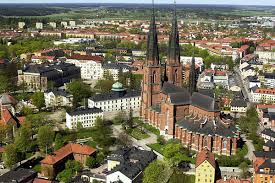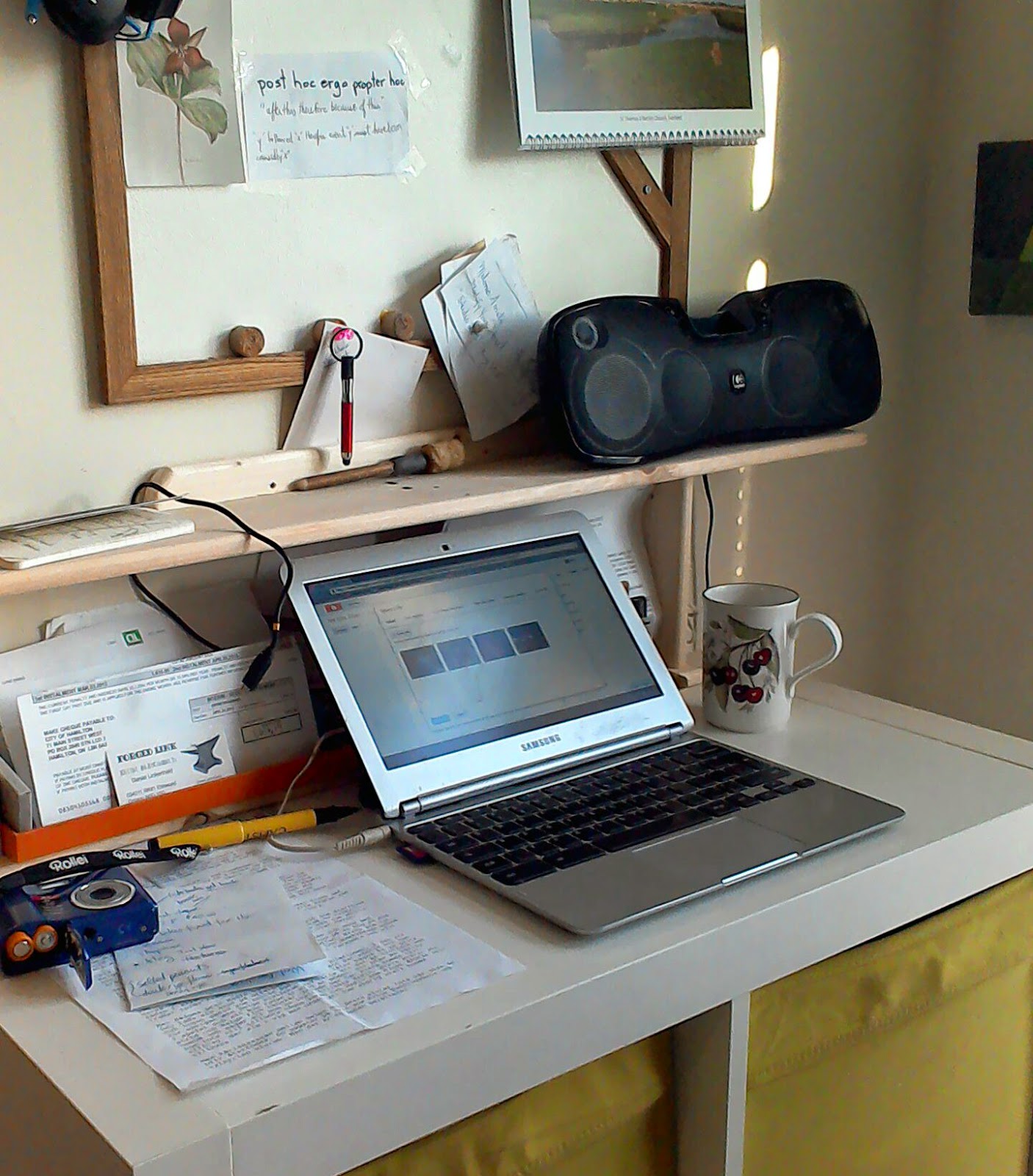Today we are expecting friends and family to a wonderful dinner, skilfully prepared by my talented and dedicated wife Eva. Our Easter feast will feature lamb, several home made breads, appetizers following a Swedish theme and two desserts; each more decadent than the other. This day begins to demonstrate how blessed we are.
Eva is in church, singing in the choir and today I am staying home. My back has been bothering me and I want to be on my best form to enjoy the company of our friends and family. The long sit at church is very hard on my back.
I am at home making some last minute preparations, listening to music and thinking.
 |
The Cathedral is surrounded by University buildings.
There are other building connected with the university spread though out
the town, including a large teaching hospital. |
One of the buildings we visited was the Museum Gustavianum, which displays some of the University's historic collection of educational materials, as well archaeological findings.
The Norse/Scandinavians are an organized and developed culture that has flourished for more than 2,000 years and continues to influence design and culture all over the world.
When I visit museums and see the everyday objects from house holds now long vanished I can't help but wonder what those ancient people thought and believed. In what way were their values like ours and in what way different?
I have come to believe that they valued "things" and the people that made "things" differently than we do in our modern world. Clearly everyone had fewer things that we do, and so I suspect that they valued their possessions more highly that we do.
Museum displays are filled with everyday objects, spoons,knives,pots,plates, leather bags and yes even weapons. When I look at those objects I see nearly all of them are ornamented in some way: shells or stones are inset, wood is carved, everything that could be painted was coloured, clothing is embroidered, or has some type of fancy work added, metal is chased, leather tooled. All of those things do not add to the utility of an object, but clearly that extra effort was valued and appreciated.
The spoons and tunic are modern work, inspired by historic culture.
It is not reasonable to imagine all the work you do in your shop is 'significant' or going to last generation upon generation. A good part of the work in do in my shop gets lost in the grass when it falls out a a little boy's pocket, or is out grown as little boy's and girl's interests evolve and change. Some of my most important projects just no longer apply, like cribs and nursing foot stools. Bookcases disappear into the background and toy boxes become so omni present that they are forgotten.
Many of the things I do in my shop are repairs. 'Opa Fix' was a commonly heard refrain as the many cars, trucks, planes and boats suffered from day to day wear and tear. A tough loved toy is happier than a neglected toy.
My most recent project could have been a ten minute job or but I decided differently. My wife broke the plastic section of a pants hanger and brought me the metal part, as a scavenger I collect all sorts of bits and pieces to use sometime later.
The trip to the Gustavianum made me think. Why not treat this small task as though it was not just a throw away, but as something significant? So I cut the wood, drilled and sanded as usual but then I drew a leaf pattern on the wood, and burned the pattern and water colour painted the leaves as high lights.
The hanger will not hold pants any better for the ornaments but that is not the reason I added the embellishment. I added the extra because I could, and because it makes a common house hold object beautiful and maybe making common things beautiful will make those things less common.
I have to attach the video just to show my followers in the south that we are struggling to over come old man Winter even yet.
cheers, Happy Easter,
ianw































.jpg)







